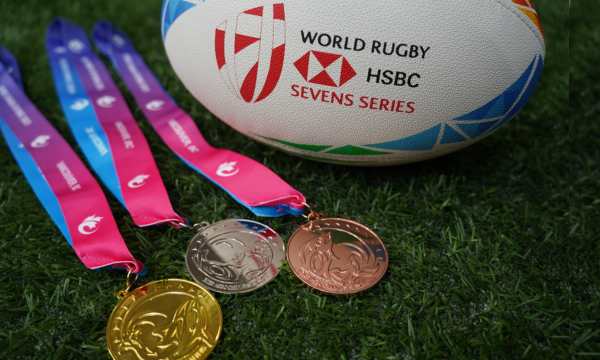Six Nations: Discover Tactics, Rules, and Curiosities of the Great Tournament
The Six Nations is the most prestigious rugby championship, attracting millions of fans in an annual celebration of passion and tradition.
Anúncios
Every European winter, six rugby powerhouses face off in packed stadiums and electrifying atmospheres that transcend the sport.
Imagine the deafening roar of Twickenham or the palpable excitement at Aviva Stadium during century-old classics!
In today’s article, we will reveal all the secrets, stories, and details that make the Six Nations an unmissable event on the global sports calendar.
From Five to Six Nations: How the Tournament Evolved
The Six Nations began as the Home Nations Championship in 1883, initially bringing together England, Scotland, Wales, and Ireland in annual clashes.
France joined the tournament in 1910, transforming it into the Five Nations and bringing the Latin style to traditionally British rugby.
The tournament reached its current format in 2000 when Italy was invited to participate, finally transforming it into the Six Nations we know today.
The Italians brought new energy and expanded the geographical reach of the championship.
Over more than 130 years, the tournament evolved from a local British event to a prestigious continental competition.
The championship maintains century-old traditions while adapting to modern times with global broadcasts and million-dollar sponsorships.
How the Tournament Works and How the Champion is Decided
The Six Nations takes place annually between February and March, providing five intense weeks of elite rugby.
Each team faces all the others once, totaling 15 matches in a round-robin format. The schedule alternates home and away games each year, ensuring competitive balance over time.
A team will have three home games and two away games in one year, reversing the following year. The current scoring system rewards both victories and offensive performances.
Teams receive 4 points for a win, 2 points for a draw, and 0 for a loss, with additional bonus points available. Bonus points system:
- 1 point for scoring 4 or more tries.
- 1 point for losing by a margin of 7 points or less.
- 3 additional points for achieving the Grand Slam.
The champion is simply the team with the most points at the end of the five rounds. In case of a tie, criteria such as point difference and tries scored determine the winner.
The matches are spread over weekends, with two games on Saturdays and one on Sundays. This structure allows fans to follow all the clashes.

Ireland-is-the-tournament-champion-in-2024-(Source-Google)
Grand Slam and Triple Crown: The Special Titles within the Six Nations
In the universe of the Six Nations, winning the championship is already remarkable, but two special titles further elevate the prestige of the teams.
These honors add layers of excitement to the tournament and carry unique historical significance. The Grand Slam represents perfection in the tournament, awarded to the team that wins all five matches.
Only 41 Grand Slams have been achieved since 1908, demonstrating the extreme difficulty of this feat.
The Triple Crown is a title contested exclusively among the four British nations within the Six Nations: England, Scotland, Wales, and Ireland. It is won by defeating all these teams.
Since 2006, a physical trophy has been awarded to the Triple Crown winner, adding tangible recognition to this traditional achievement. Other special achievements:
- Calcutta Cup: Trophy contested between England and Scotland.
- Millennium Trophy: Between England and Ireland.
- Centenary Quaich: Between Scotland and Ireland.
- Giuseppe Garibaldi Trophy: Between France and Italy.
- Wooden Spoon: Informal title “awarded” to the team that finishes last.
The 6 Nations: Profile of the Teams Competing in the Tournament
England
The historical giant of the Six Nations with a century-old tradition of school and university rugby. Known for pragmatic play and powerful forwards, the English team alternates periods of dominance with phases of rebuilding.
France
Unpredictability personified in the tournament, the French combine refined technique with bursts of individual brilliance. Their players bring Latin flair to the tournament, delighting fans with bold plays.
Ireland
Evolved from underdog to modern powerhouse with an efficient provincial system and growing professionalism. Known for tactical discipline, intensity in set-pieces, and passionate loyalty of their fans.
Scotland
A team with a proud rugby tradition that competes fiercely in the Six Nations despite a smaller player base. The Scots are famous for their resilience, running game, and intelligent tactics to compensate for physical disadvantages.
Wales
The nation that breathes rugby and holds a remarkable history despite a small population. Values traditions while developing technical players, known for their almost impenetrable defensive lines.
Italy
The most recent member of the tournament still seeking to consistently establish itself at the top of European rugby.
The Azzurri brought Mediterranean passion to the tournament and are gradually progressing, already achieving memorable victories.
Unmissable Classics: The Games that Define the Six Nations
The Six Nations is full of electrifying clashes that transcend the sport and dive into centuries of shared history.
England vs France
The most glamorous clash pits historical powerhouses separated by the English Channel against each other. “Le Crunch” represents the clash between contrasting styles: Anglo-Saxon pragmatism versus Latin improvisation.
Wales vs England
One of the tournament’s greatest rivalries dates back to medieval political tensions between the Welsh and the English. The Millennium Stadium in Cardiff becomes a cauldron of emotion when the English visit.
Scotland vs England
The oldest international rugby match in the world dating back to 1871 is a centerpiece of the Six Nations. The contest for the Calcutta Cup encapsulates historical rivalries and Scottish national pride.
Ireland vs England
A clash that transcends rugby due to the complex political past between the nations. The intensity of this duel is reflected in the ferocity of the contacts and the vibrant atmosphere.
France vs Italy
The Latin derby often features offensive and spectacular rugby. The evolution of this rivalry accompanies Italy’s development as a rugby nation.
Scotland vs Wales
A traditionally balanced clash in the Six Nations between Celtic nations with deep mutual respect. This match often features thrilling turnarounds and dramatic finishes.

Six-Nations-players-in-2025-(Source-Google)
The Greatest Winners of the Tournament
The balance of power in the tournament has evolved significantly over the decades. Wales leads the total number of titles when combining all eras of the tournament.
The Welsh have won 39 championships in their history, including 12 Grand Slams in the Six Nations and its previous iterations.
England follows closely with 29 overall titles in the championship, including 13 Grand Slams. The English dominated particularly in the early days of the tournament and again in the 1990s and 2000s.
France emerged as a powerhouse, accumulating 26 titles in total. The French revolutionized the tournament with their distinctive style and have won 10 Grand Slams since their inclusion.
Ireland experienced its most successful period recently, winning four titles since 2014. Their historical total now reaches 15 championships, including memorable Grand Slams in 2009, 2018, and 2023.
Scotland has won 15 titles, although they have experienced longer periods without success. Their last championship win occurred in 1999, before Italy’s inclusion.
Italy is still seeking its first title since joining the Six Nations in 2000. The Azzurri have made progress, recording significant victories over all other participating nations over the years.
Who are the Stars on the Six Nations Field?
With players combining exceptional talent, impressive physical strength, and sharp tactical intelligence, the tournament brings together the elite of European rugby.
These stars often determine the outcome of decisive matches.
- Antoine Dupont (France): The phenomenal scrum-half considered by many to be the best player in the world today.
- Marcus Smith (England): The young fly-half who represents the future with his creative play and precise kicks.
- Josh van der Flier (Ireland): Tireless flanker elected World Player of the Year with presence in breakdowns and impeccable defensive line.
- Finn Russell (Scotland): Known for impossible passes and instinctive decisions with a willingness to risk spectacular plays.
- Louis Rees-Zammit (Wales): The Welsh player with explosive runs and acrobatic finishes.
- Ange Capuozzo (Italy): The Italian revelation who brought new energy with his unpredictable runs and defensive courage.
These stars often become national heroes during the Six Nations, inspiring future generations and elevating the global profile of the tournament.
Unique Traditions and Customs that Mark the Tournament
The Six Nations transcends rugby as a simple sport, incorporating rituals and traditions that connect generations of fans.
These cultural elements transform the tournament into an annual celebration of national identity. National anthems sung at full volume before matches create spine-tingling moments of national unity.
Fan travels between countries during the tournament generate unique cultural exchanges in European capitals.
Tens of thousands of fans cross borders, creating festive and friendly atmospheres in the host cities. The traditional third half after Six Nations games exemplifies rugby values.
Opposing players share drinks and conversations, leaving rivalries on the field regardless of the intensity of the matches.
Historical trophies like the Calcutta Cup (created in 1879 with melted Indian rupees) add layers of tradition.
Each of these objects carries fascinating stories that connect the present to the tournament’s past.
The Growth of European Women’s Rugby
The Women’s Six Nations (the women’s version of the tournament) has experienced exponential growth in the last decade, reflecting the global evolution of women’s rugby.
This championship follows a similar format to the men’s, with the same six nations competing annually. England dominates the recent scene of the women’s tournament with significant professional investments.
The “Red Roses” have set a new standard of excellence with full-time contracted players and elite structure.
France emerges as the main challenger, with a semi-professional program and a growing player base. The France-England clash has become the great classic of European women’s rugby.
Ireland, Scotland, Wales, and Italy are progressively developing their women’s programs, seeking to narrow the competitive gap in the tournament.
The media exposure of the Women’s Six Nations has grown significantly, with dedicated broadcasts and expanded coverage.
This visibility drives public interest and attracts new players to the sport across Europe. The social impact of the Women’s Six Nations transcends sports results, inspiring girls and women to play rugby.
Final Considerations
The Six Nations remains the crown jewel of European rugby, transcending generations with its unique blend of tradition and modernity.
This tournament not only defines the elite of the sport in the northern hemisphere but also preserves the cultural essence that makes rugby special.
As rugby continues to evolve globally, the Six Nations adapts while maintaining its distinctive character and timeless appeal.
To experience the true soul of rugby, it’s not enough to just watch games – you need to immerse yourself in the electrifying atmosphere of the Six Nations, feel the passion of the singing crowds, and understand the century-old stories behind each clash.
FAQ
When will the next edition of the Six Nations take place?
What was the biggest blowout in the tournament’s history?
What is the average attendance at stadiums during the Six Nations?
Which countries have hosted the Rugby World Cup final?
How are referees chosen for the Six Nations?
 7 Bigger Rugby Fields Every Fan Should Know
7 Bigger Rugby Fields Every Fan Should Know
Pure adrenaline, tradition and unforgettable victories: that’s what great rugby fields are all about. Anúncios Have you ever stopped to think about the rugby fields that […]
Keep reading World Rugby Sevens: Get to Know Everything About the Olympic Tournament
World Rugby Sevens: Get to Know Everything About the Olympic Tournament
Discover the electrifying energy of World Rugby Sevens and get ready to fall in love with this dynamic sport. Anúncios This championship combines speed, skill and […]
Keep reading How to Watch Live Rugby on DAZN: Your Complete Guide
How to Watch Live Rugby on DAZN: Your Complete Guide
Ready to feel the excitement of live rugby without leaving your couch? Experience the adrenaline with the Dazn App! Anúncios If you’re someone who cheers for […]
Keep reading